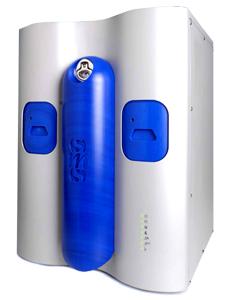Difference between revisions of "Surface Energy Analyzers"
(Created page with "Category:Analyzing{{Knoppen}} <noinclude><!------------------------------------------------ * READ THIS FIRST * Only edit this page if you can improve the content. * Imprope...") |
|||
| (One intermediate revision by the same user not shown) | |||
| Line 1: | Line 1: | ||
[[Category:Analyzing]]{{Knoppen}} | [[Category:Analyzing]]{{Knoppen}} | ||
[[File:SEA.jpg|thumb|right|Surface Energy Analyzers]] | |||
* | '''Surface Energy Analyzer (SEA)''' is a new second generation Inverse Gas Chromatography (IGC)instrument. The surface energy analyzer is an advanced instrumentation for the characterisation of particulates, fibres and thin-films. It opens up a whole new world of sorption solutions. These are some of the facilities that the Surface energy anlayzer provides: | ||
* | |||
* | * Surface energetics | ||
* | * Surface energy heterogeneity mapping | ||
* | * Unrivalled accuracy | ||
* --- | * Heats of sorption | ||
* Fully automated | |||
* Sorption isotherms | |||
* Humidity control | |||
* Phase transitions | |||
* Sample reconditioning | |||
* Diffusion kinetics | |||
* Wide temperature range | |||
Key properties measured by the surface energy analyzer include surface energy acid-base parameters, energetic heterogeneity mapping, batch-to-batch variations in surface chemistry, glass transition temperatures, adhesion – cohesion thermodynamics, and solubility parameters and crosslink density. | |||
==How does the Surface Energy Anlayzer (SEA) work== | |||
The SEA is based on Inverse Gas Chromatography (IGC) methodology and is a gas phase technique for characterising surface and bulk properties of solid materials. The principles of IGC are very simple, being the reverse of a conventional gas chromatographic (GC) experiment. | |||
A cylindrical column is uniformly packed with the solid material of interest, typically a powder, fibre or film. A pulse or constant concentration of gas is then injected down the column at a fixed carrier gas flow rate , and the time taken for the pulse or concentration front to elute down the column is measured by a detector. A series of IGC measurements with different gas phase probe molecules then allows access to a wide range of phyisco-chemical properties of the solid sample. | |||
Latest revision as of 21:56, 29 January 2013
Surface Energy Analyzer (SEA) is a new second generation Inverse Gas Chromatography (IGC)instrument. The surface energy analyzer is an advanced instrumentation for the characterisation of particulates, fibres and thin-films. It opens up a whole new world of sorption solutions. These are some of the facilities that the Surface energy anlayzer provides:
- Surface energetics
- Surface energy heterogeneity mapping
- Unrivalled accuracy
- Heats of sorption
- Fully automated
- Sorption isotherms
- Humidity control
- Phase transitions
- Sample reconditioning
- Diffusion kinetics
- Wide temperature range
Key properties measured by the surface energy analyzer include surface energy acid-base parameters, energetic heterogeneity mapping, batch-to-batch variations in surface chemistry, glass transition temperatures, adhesion – cohesion thermodynamics, and solubility parameters and crosslink density.
How does the Surface Energy Anlayzer (SEA) work
The SEA is based on Inverse Gas Chromatography (IGC) methodology and is a gas phase technique for characterising surface and bulk properties of solid materials. The principles of IGC are very simple, being the reverse of a conventional gas chromatographic (GC) experiment.
A cylindrical column is uniformly packed with the solid material of interest, typically a powder, fibre or film. A pulse or constant concentration of gas is then injected down the column at a fixed carrier gas flow rate , and the time taken for the pulse or concentration front to elute down the column is measured by a detector. A series of IGC measurements with different gas phase probe molecules then allows access to a wide range of phyisco-chemical properties of the solid sample.
